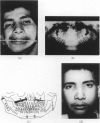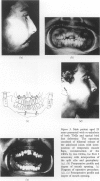Abstract
This is a review of 204 patients with temporomandibular joint (TMJ) ankylosis treated according to a definitive protocol in the Cranio-Maxillo-Facial Department of the Alexandria University Hospital during the period 1990-1996 with a follow-up varying from 1.5 to 7 years. A history of trauma was confirmed in 98% of cases. Patients were grouped into: (1) Those with ankylosis not associated with facial deformities. The management involves release of the ankylosed joint(s) and reconstruction of the condyle ramus unit(s) (CRUs) using costochondral graft(s) (CCGs). (2) Those with mandibular ankylosis complicated by facial bone deformities, either asymmetric or bird face. The treatment consists of release of the ankylosis, reconstruction of the CRUs, and correction of jaw deformities--all performed simultaneously. Respiratory embarrassment was an important presenting symptom in the second group, all of whom complained of night snoring, eight of whom had obstructive sleep apnoea (OSA). In this latter group, respiratory obstruction improved dramatically after surgical intervention. The degree of mouth opening, monitored as the interincisal distance (IID) improved from a range of 0-12 mm to over 30 mm in 62% of patients and to 20-30 mm in 29% of patients. However, reankylosis was still around 8% and was attributed to lack of patient compliance in 75% and to iatrogenic factors in 25% of patients. CCGs resorption, whether partial or complete, occurred in 27% of patients, resulting in retarded growth, relapse of deformities and night snoring.
Full text
PDF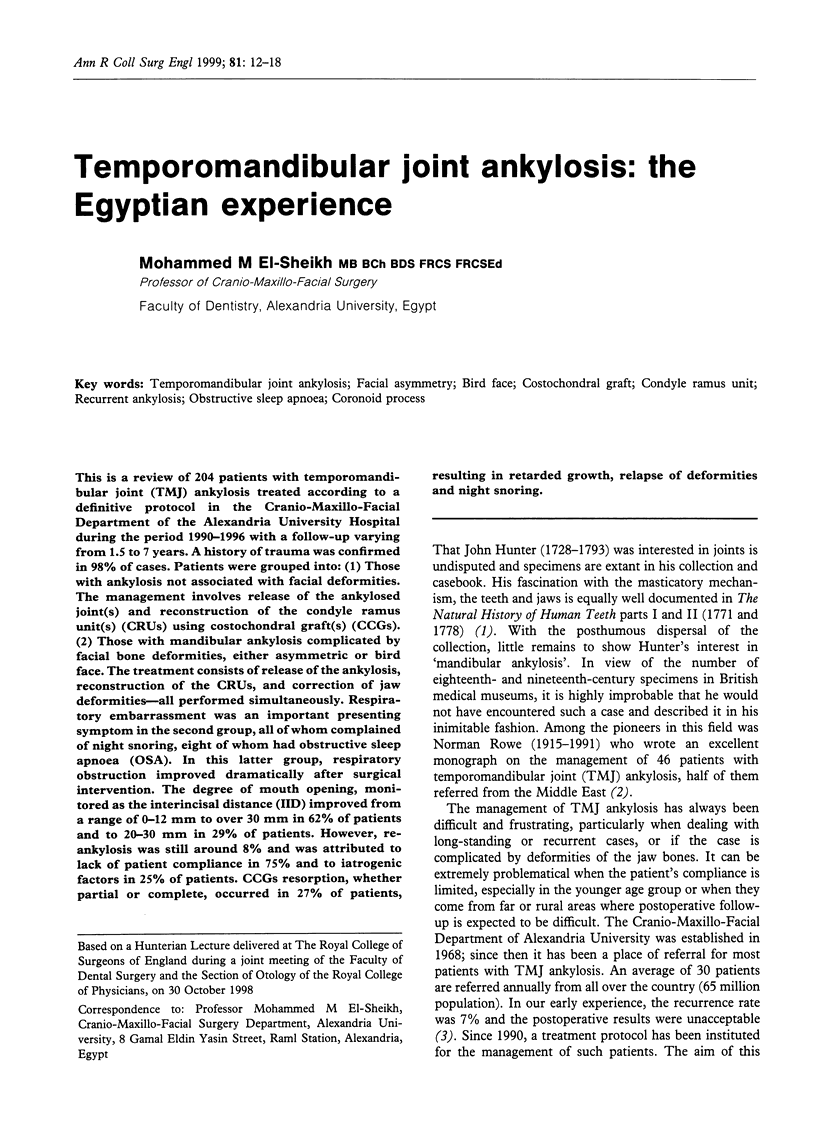
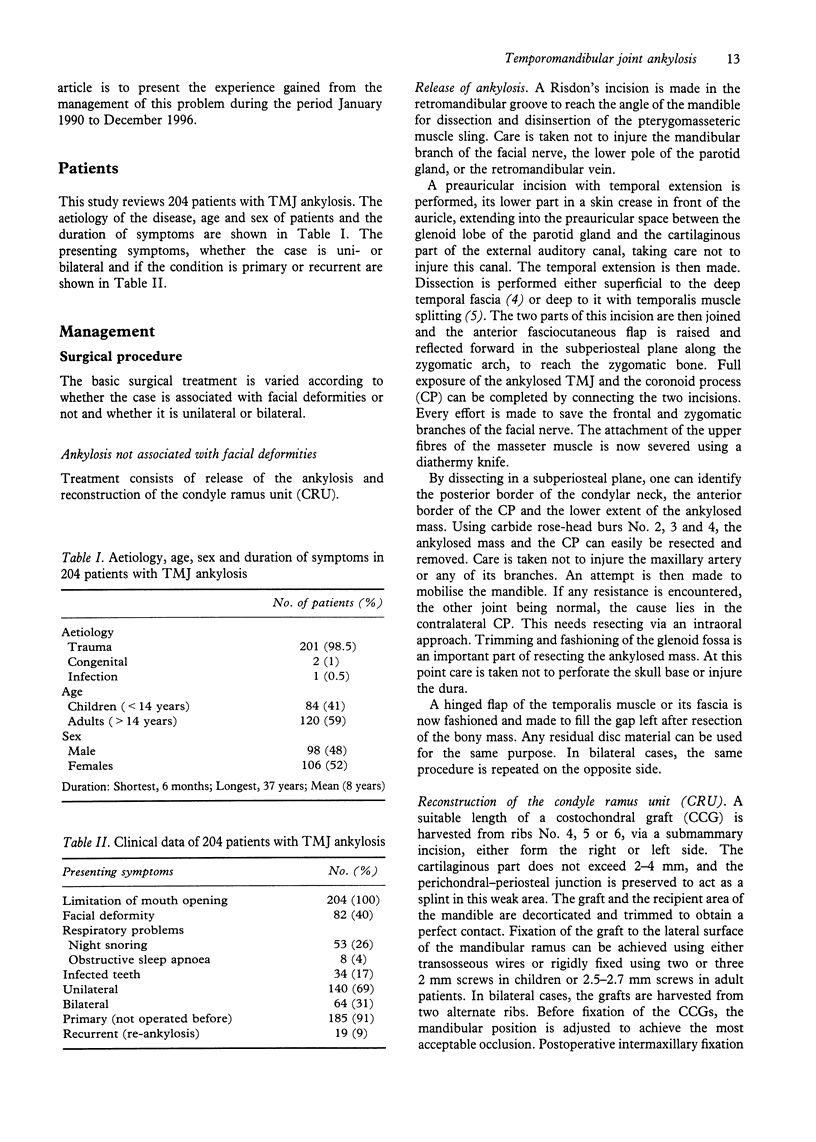
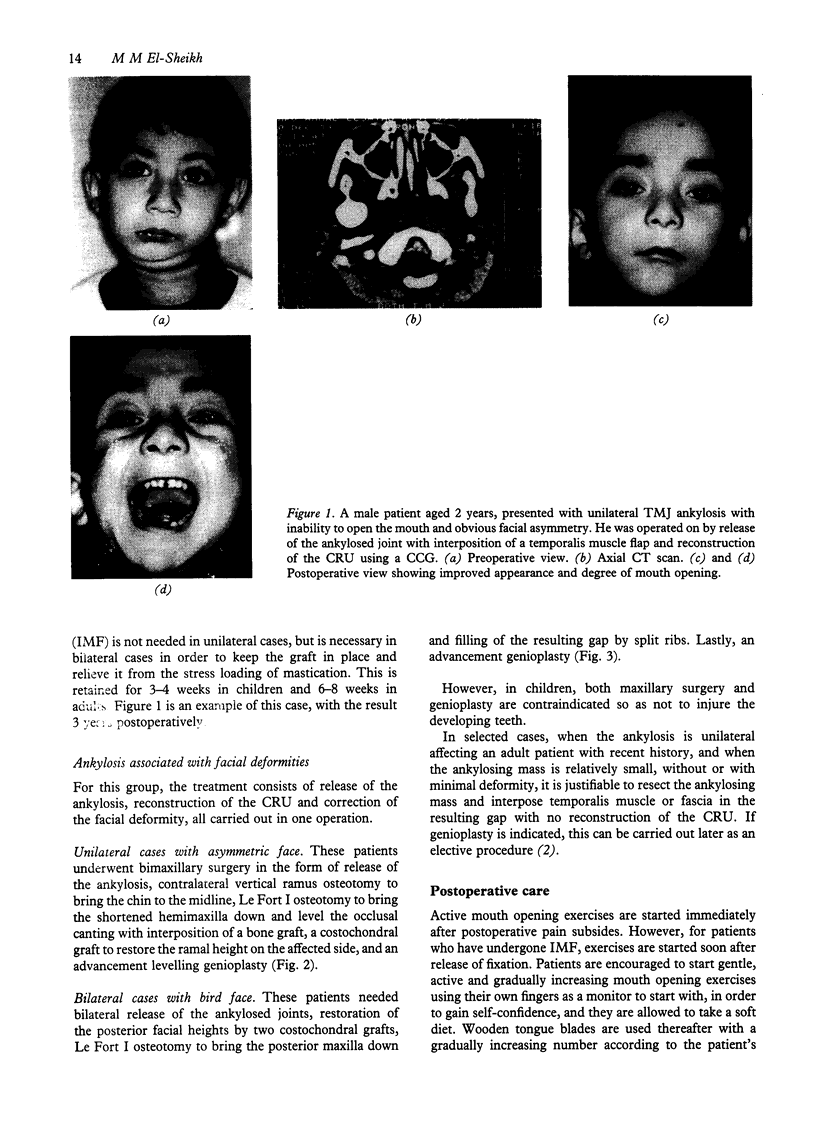
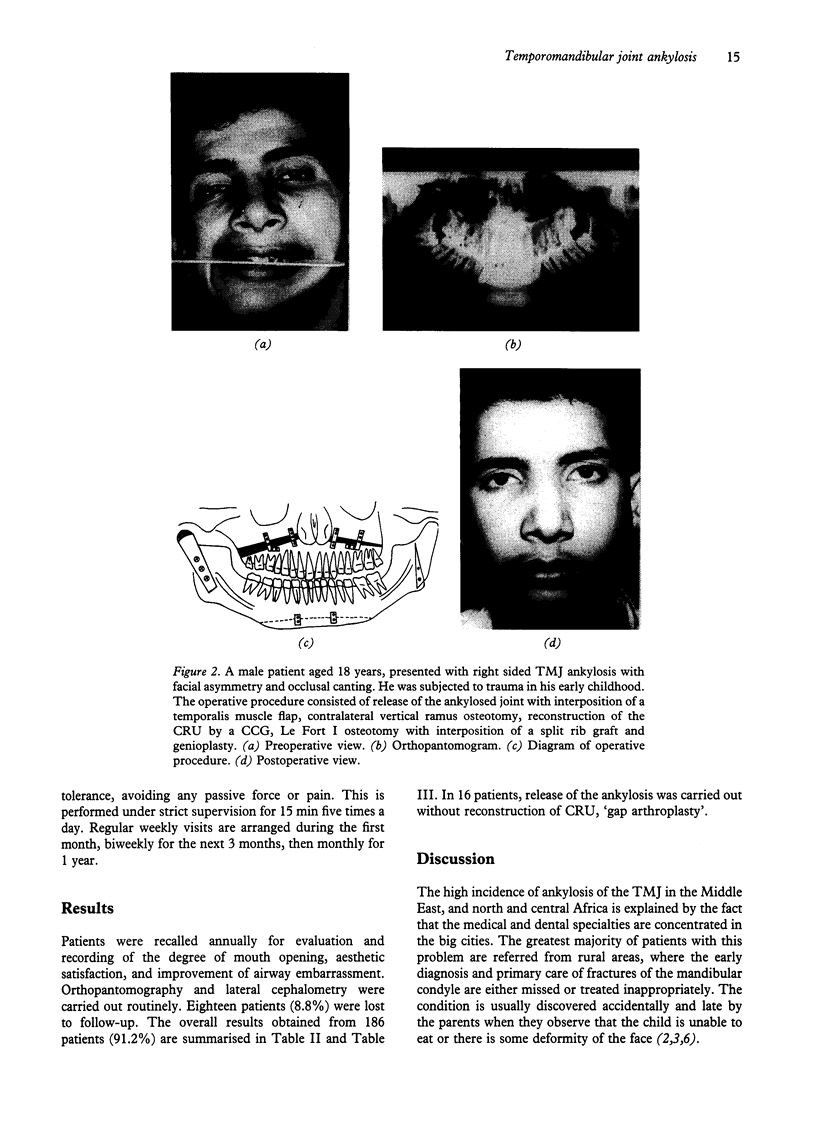
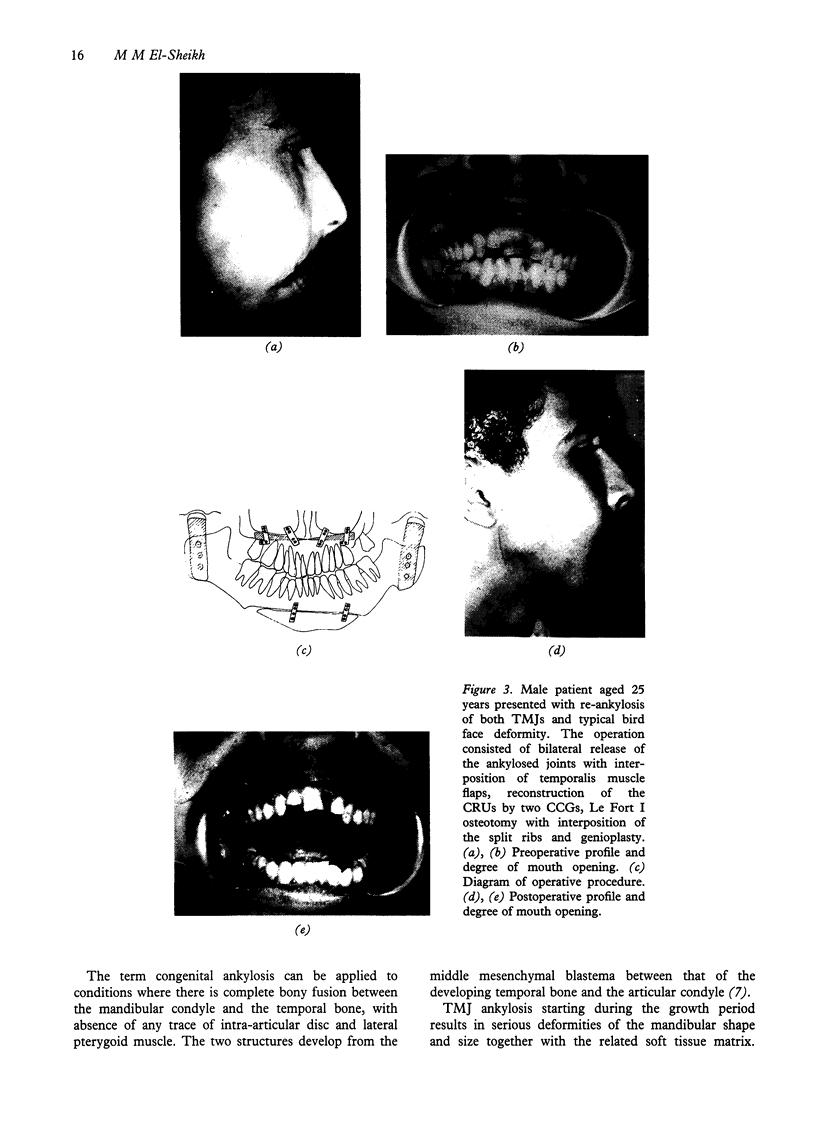
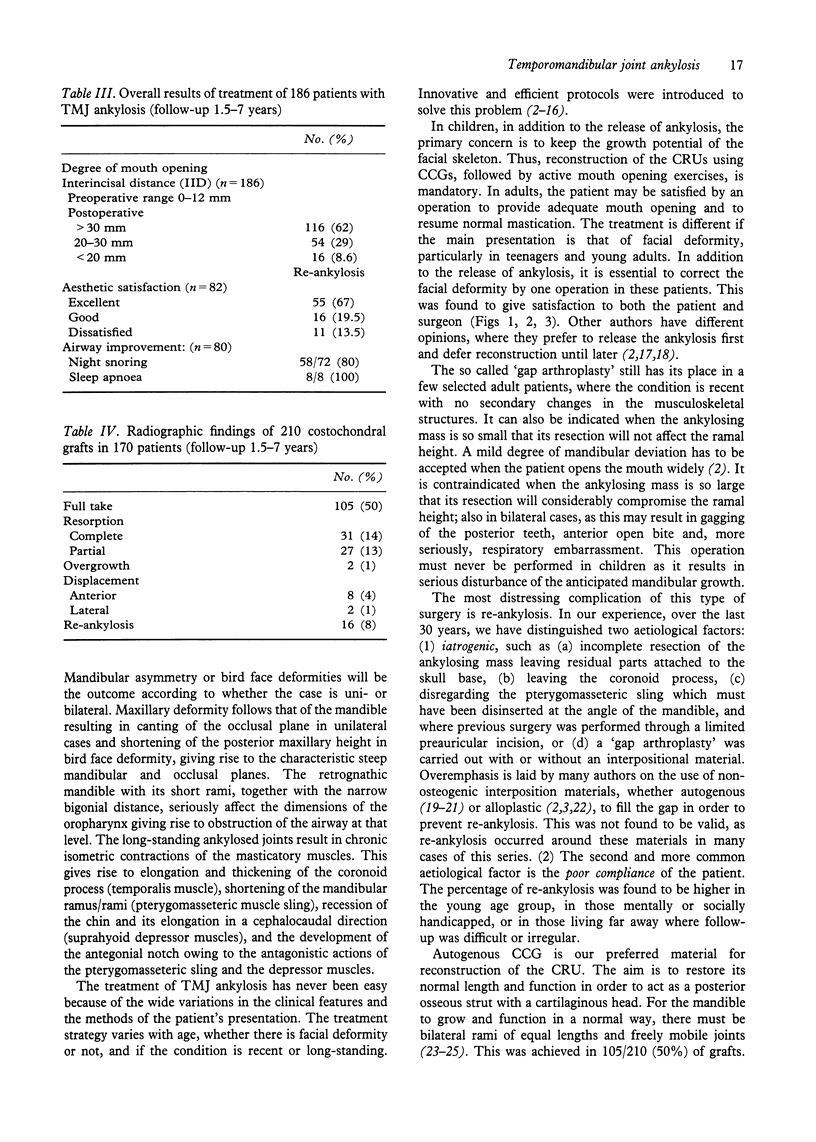
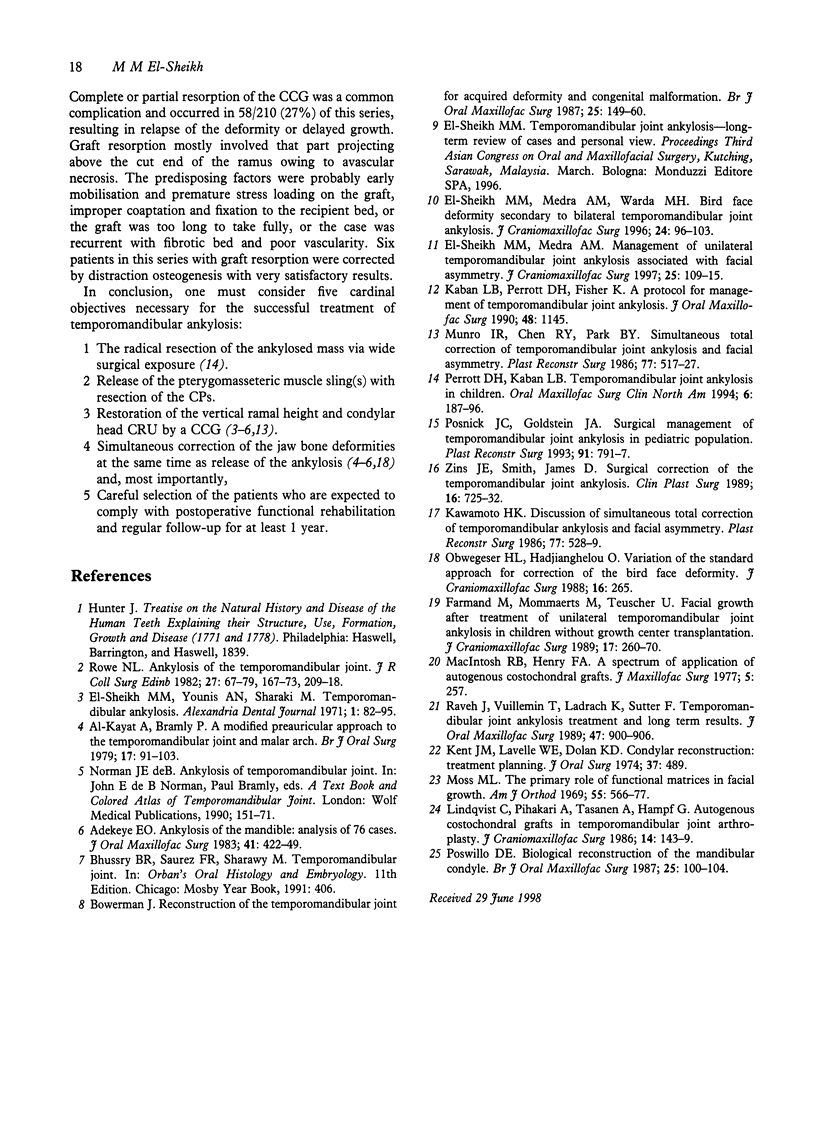
Images in this article
Selected References
These references are in PubMed. This may not be the complete list of references from this article.
- Al-Kayat A., Bramley P. A modified pre-auricular approach to the temporomandibular joint and malar arch. Br J Oral Surg. 1979 Nov;17(2):91–103. doi: 10.1016/s0007-117x(79)80036-0. [DOI] [PubMed] [Google Scholar]
- Bowerman J. Reconstruction of the temporomandibular joint for acquired deformity and congenital malformation. Br J Oral Maxillofac Surg. 1987 Apr;25(2):149–160. doi: 10.1016/0266-4356(87)90009-x. [DOI] [PubMed] [Google Scholar]
- Farmand M., Mommaerts M., Teuscher U. Facial growth after treatment of unilateral temporomandibular joint ankylosis in childhood without growth centre transplantation. A serial cephalomorphometric study. J Craniomaxillofac Surg. 1989 Aug;17(6):260–270. doi: 10.1016/s1010-5182(89)80094-0. [DOI] [PubMed] [Google Scholar]
- Kaban L. B., Perrott D. H., Fisher K. A protocol for management of temporomandibular joint ankylosis. J Oral Maxillofac Surg. 1990 Nov;48(11):1145–1152. doi: 10.1016/0278-2391(90)90529-b. [DOI] [PubMed] [Google Scholar]
- Kent J. N., Lavelle W. E., Dolan K. D. Condylar reconstruction: treatment planning. Oral Surg Oral Med Oral Pathol. 1974 Apr;37(4):489–497. doi: 10.1016/0030-4220(74)90277-1. [DOI] [PubMed] [Google Scholar]
- Lindqvist C., Pihakari A., Tasanen A., Hampf G. Autogenous costochondral grafts in temporo-mandibular joint arthroplasty. A survey of 66 arthroplasties in 60 patients. J Maxillofac Surg. 1986 Jun;14(3):143–149. doi: 10.1016/s0301-0503(86)80280-6. [DOI] [PubMed] [Google Scholar]
- MacIntosh R. B., Henny F. A. A spectrum of application of autogenous costochondral grafts. J Maxillofac Surg. 1977 Nov;5(4):257–267. doi: 10.1016/s0301-0503(77)80120-3. [DOI] [PubMed] [Google Scholar]
- Moss M. L., Salentijn L. The primary role of functional matrices in facial growth. Am J Orthod. 1969 Jun;55(6):566–577. doi: 10.1016/0002-9416(69)90034-7. [DOI] [PubMed] [Google Scholar]
- Munro I. R., Chen Y. R., Park B. Y. Simultaneous total correction of temporomandibular ankylosis and facial asymmetry. Plast Reconstr Surg. 1986 Apr;77(4):517–529. doi: 10.1097/00006534-198604000-00001. [DOI] [PubMed] [Google Scholar]
- Obwegeser H. L. Variations of a standard approach for correction of the bird-face deformity. J Craniomaxillofac Surg. 1988 Aug;16(6):247–265. doi: 10.1016/s1010-5182(88)80059-3. [DOI] [PubMed] [Google Scholar]
- Posnick J. C., Goldstein J. A. Surgical management of temporomandibular joint ankylosis in the pediatric population. Plast Reconstr Surg. 1993 Apr;91(5):791–798. doi: 10.1097/00006534-199304001-00006. [DOI] [PubMed] [Google Scholar]
- Poswillo D. E. Biological reconstruction of the mandibular condyle. Br J Oral Maxillofac Surg. 1987 Apr;25(2):100–104. doi: 10.1016/0266-4356(87)90003-9. [DOI] [PubMed] [Google Scholar]
- Raveh J., Vuillemin T., Lädrach K., Sutter F. Temporomandibular joint ankylosis: surgical treatment and long-term results. J Oral Maxillofac Surg. 1989 Sep;47(9):900–906. doi: 10.1016/0278-2391(89)90371-6. [DOI] [PubMed] [Google Scholar]
- Rowe N. L. Ankylosis of the temporomandibular joint. J R Coll Surg Edinb. 1982 Mar;27(2):67–79. [PubMed] [Google Scholar]
- Zins J. E., Smith J. D., James D. R. Surgical correction of temporomandibular joint ankylosis. Clin Plast Surg. 1989 Oct;16(4):725–732. [PubMed] [Google Scholar]
- el-Sheikh M. M., Medra A. M. Management of unilateral temporomandibular ankylosis associated with facial asymmetry. J Craniomaxillofac Surg. 1997 Jun;25(3):109–115. doi: 10.1016/s1010-5182(97)80001-7. [DOI] [PubMed] [Google Scholar]
- el-Sheikh M. M., Medra A. M., Warda M. H. Bird face deformity secondary to bilateral temporomandibular joint ankylosis. J Craniomaxillofac Surg. 1996 Apr;24(2):96–103. doi: 10.1016/s1010-5182(96)80020-5. [DOI] [PubMed] [Google Scholar]
- el-Sheikh M. M., Younis A. N., Sharaki M. Temporo-mandibular ankylosis. Alex Dent J. 1976 May;1(2):82–95. [PubMed] [Google Scholar]




